Yesterday was my first day of a two-day mandatory Teaching Assistant training course. This is required training for Masters and PhD students who are going to be a TA in a course, and as I understand it, it’s the only training in teaching that these students will have.
About 40 of us attended this four-hour session which was taught by a UCI Pedagogical Scholar (a PhD student). They were presenting a curriculum that someone else created. This curriculum included a 30-minute overview on being a TA, a 30-minute overview on DEI, and a 30-minute overview on learning outcomes and active learning. Each of these sections was structured as a 5-6 minute set of introductory slides, a 5-6 minute activity, another 5-6 minute set of slides, another 5-6 minute activity, and then was separated from the next by a 10 minute break. At the end, the representatives of the UAW4811 union came and discussed union participation.
These were the training goals; students will:
- Gain confidence and practical skills for leading and supporting undergraduate learning.
- Learn about inclusive and accessible teaching practices that foster student success across UCI’s diverse classrooms.
- Become familiar with policies and resources that ensure both you and your students have the support you need.
- Join a community of graduate instructors who, like you, are committed to excellence in teaching and learning.
It was stressed repeatedly that a TA is a critical part of the university experience:
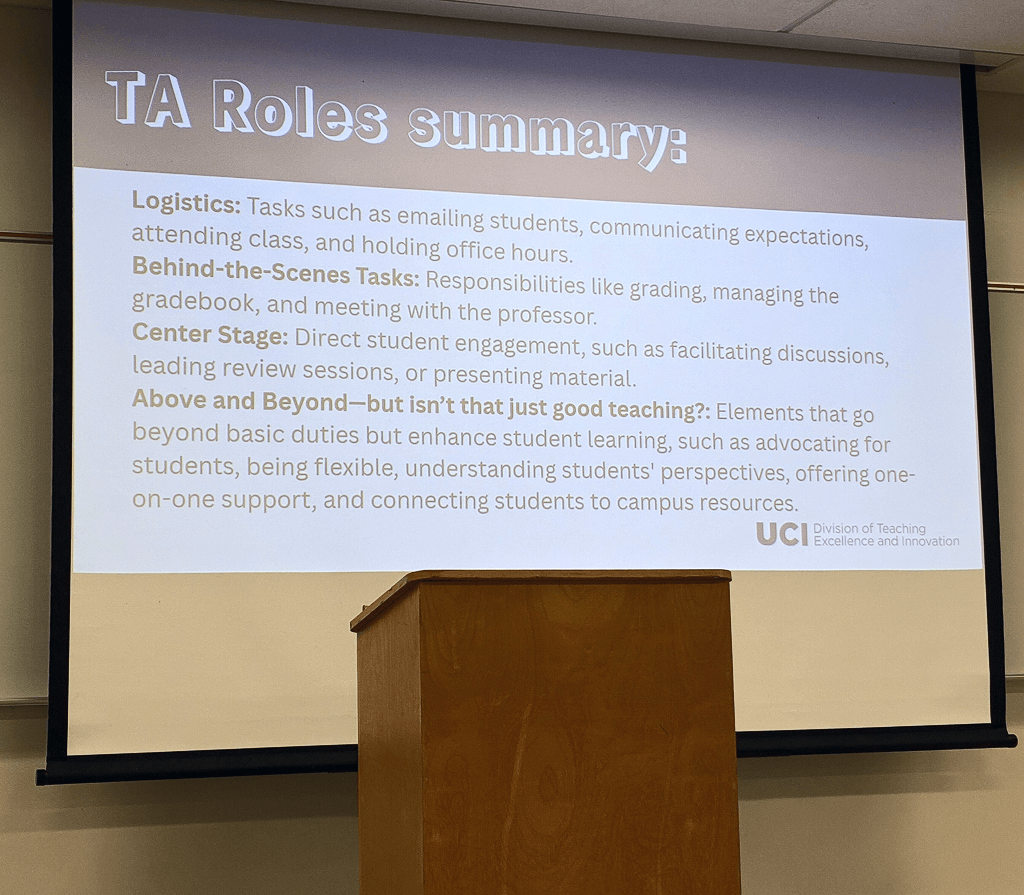
The entire experience is so troubling, as it’s a large indicator of a systemic problem of higher education: most professors never learn how to teach.
First, the students don’t want to be there. Being a TA is a requirement for receiving partial or full funding for education; it’s not something that most students actually want to do. If I chase a root cause, students have to TA rather than pay for tuition because tuition is so expensive, which is because of administrative bloat, which is because of… well, there’s no root cause to chase. But if the students don’t want to be there, they aren’t going to lean in to the activities—which is what happened. And because classes are so big that professors can’t possibly manage them, they need TA support, so students have to pass the class… so there are no grades. The leader of the training did their best to generate enthusiasm, but the room was essentially a flatline.
Additionally, the class is just two days. In the best circumstances, a two-day workshop can introduce an audience to some new vocabulary, present a few methods, help attendees understand context, generate excitement, and other basics. There is no way attendees can learn anything where they can claim even the most rudimentary ability.
The content itself is rough. The DEI module presented some proud statistics on the diversity of UCI, but there was no mention of why this is relevant to teaching; it was brochure-ware. There were attempts at interactivity, such as guessing percentages of various diversity metrics:
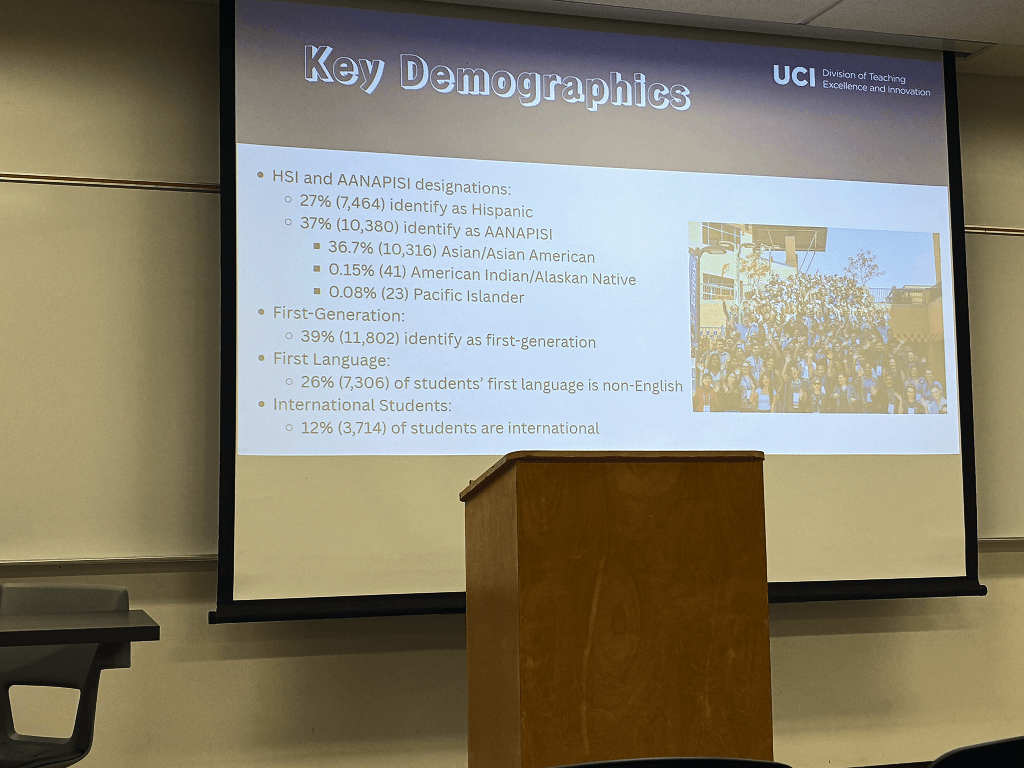
But this was not tied to any actual teaching practice.
The material on active learning introduced a set of techniques that were pedagogically aimed primarily at lower levels of K-12. These included:
“Game-show” – Substitute course material for the trivia in game show formats. You can write the questions or the students can. Real prizes like candy are an incentive and an energy provider. Examples include: Jeopardy, Taboo, Kahoot, etc.
Snowball Fight – Ask all students to write a question or a response to a question they have on a small piece of paper. Have them crumple up the paper, and toss it at least 3 different times to other students. Then ask students to share (anonymity will help shy students get their questions heard).
“Heads Up” – You can do this with the Heads Up app or use index cards. Write a term or concept on the front of the card and split the class into groups of 4. Try to have at least 2 cards per person, and each card should have a unique term/concept. Randomly choose one person to start. That person cannot see the word on the card, but instead flips it in front of their forehead so the groupmates can see the word. The objective is for the groupmates to guide the person to guessing the correct term using definitions/concepts covered in class.
Teaching is hard. Many of these students are going to go on to be professors, and will then teach. They’ll teach what they learned, and they’ll teach how they learned, too. There was essentially no discussion of pedagogy, no discussion of different learning styles, nothing domain-specific… and how can there be, given the context of the training?
In the last thirty minutes of the session, the representatives from the UAW Local 4811 union gave a brief 15 minute presentation, and then handed out sign-up cards for joining the union. Membership was presented as required. I’m imagining being 20 years old, perhaps from a country that doesn’t have a similar idea of unionized workers, and being handed a form to fill out in an official context… the form is getting filled out one way or another.
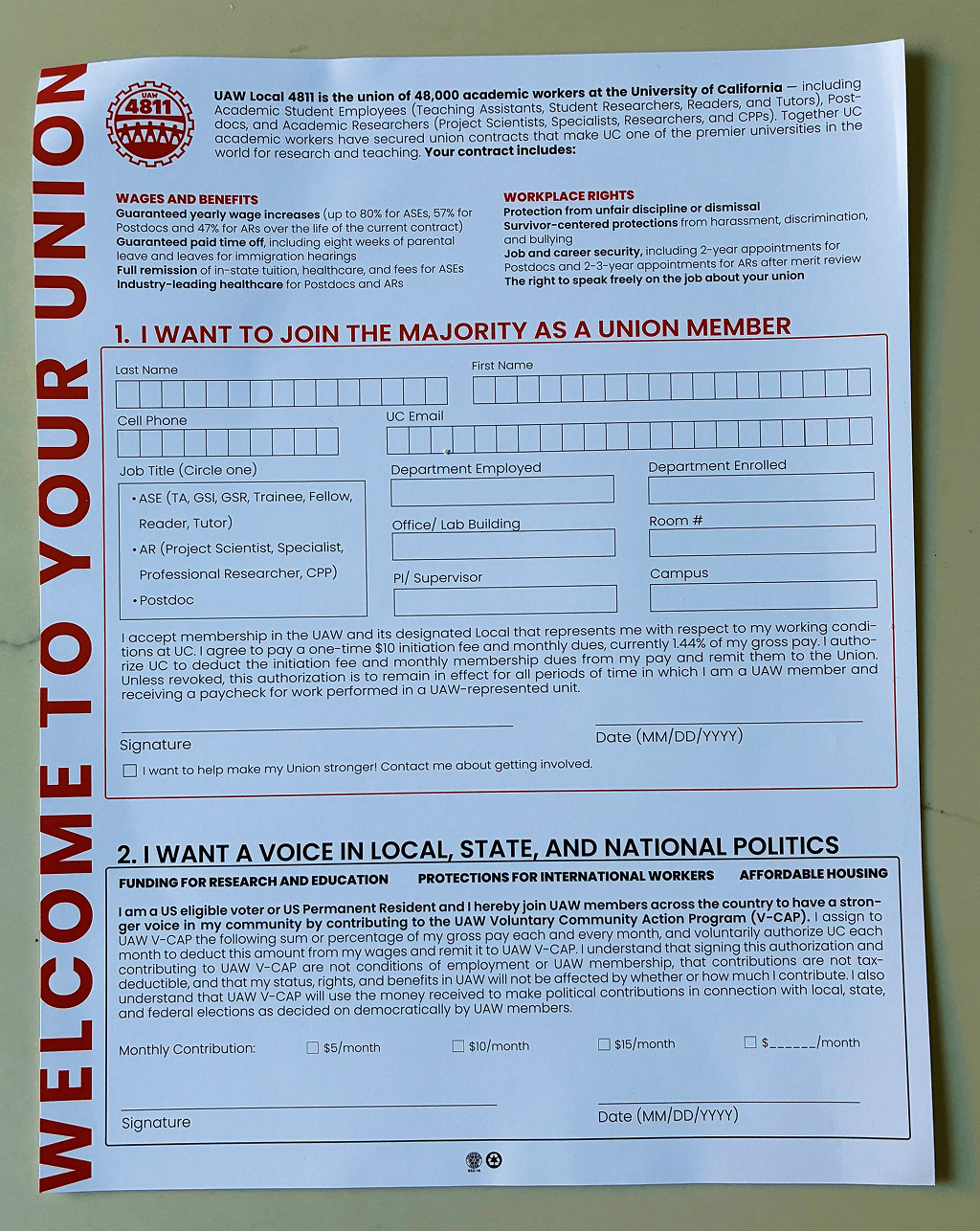
I had a very brief conversation with one of the representatives, who asked why I wasn’t signing. I explained some of my concerns about the trickle-down impact this has on the course professor’s workload, as higher wages for a TA leads directly to fewer TAs in classes that are only growing in size, which leads to less personalized attention for students, and ultimately, to less effective learning. I was unsurprised that she did not really want to have that conversation.
What a broken system all around. So many people with best intentions, but so much of a miss.
Being back on campus is refreshing, though. You get to see things like this:
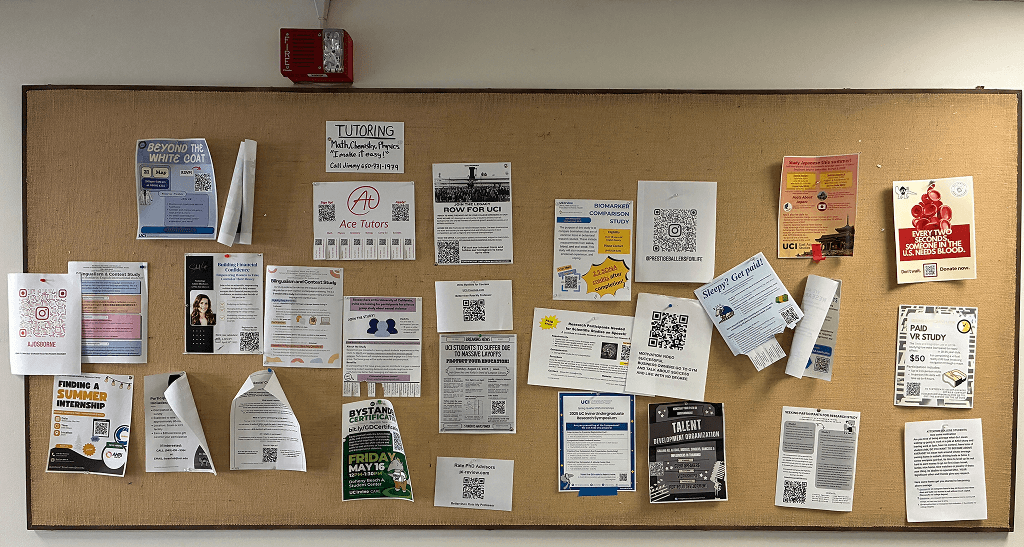
...which contain things like this:
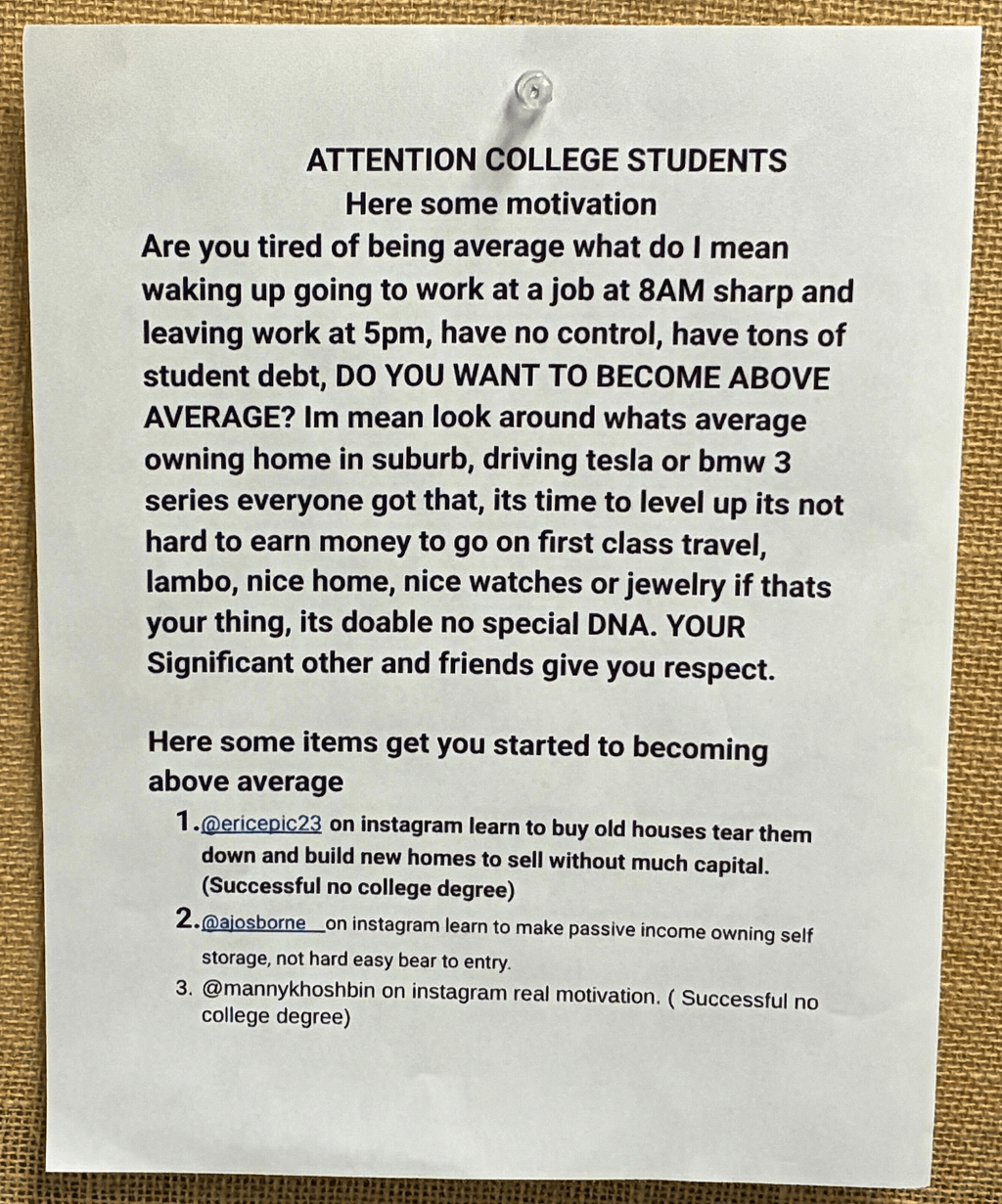
Back for day two today.
